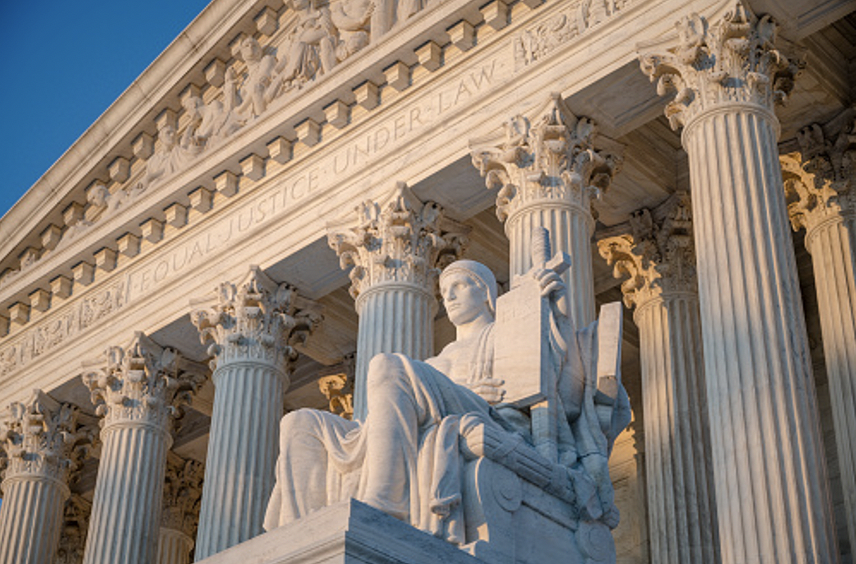By Felicia Dusha, Staff Writer

Recently, Supreme Court Justices Clarence Thomas, Stephen Breyer, and Amy Coney Barrett have expressed the Supreme Court is a non-partisan body.[1] Justice Barrett spoke about the Court’s decision-making process and apolitical ideology, stating that the Court “is not comprised of a bunch of partisan hacks.”[2] Ironically, Justice Barrett made this comment at a facility in Kentucky that bears the name of Senator Mitch McConnell, who many believe single handedly invited partisan politics into the Supreme Court.[3]
Historically, the partisan rancor that surrounds the Supreme Court and the nomination process would be easily recognizable to Americans.[4] In the Nineteenth Century, the Supreme Court was significantly less powerful but a great deal more partisan.[5] Rachel Shelden, a writer for the Washington Post, explained that there were no limitations on the ability of Supreme Court Justices to cross over into the political arena.[6]
Not much concern was shown until the Court later gained more power.[7] Sheldon continued to say that partisan fidelity, and not legal ability, was a party’s main concern—as some argue is the case today.[8] In the early Nineteenth Century, Supreme Court nominees were easily denied for lack of legal ability or bias, but more often because the Senate opposed the sitting president.[9] President John Tyler had eight nominees rejected by the Senate, which shows the Senate’s main concern was the president’s politics.[10]
The Supreme Court began to change in the late Nineteenth and Twentieth Century when the Court started acquiring greater power.[11] The acquisition of the power of certiorari allowed the Court to increase its authority.[12] The Judiciary Act of 1920 expanded the Court’s reach over additional federal claims, leaving the public concerned about its power.[13] It became necessary to insist that the court operated outside the political parties. Political considerations were no longer to be a consideration for judicial appointment.[14] This was highlighted by Chief Justice John Roberts, who during his confirmation hearing said judges are “mere umpires” calling “balls and strikes.”[15]
Thomas, Breyer, and Barrett may be sincere in their assertion that the Supreme Court functions as a non-partisan body deciding all issues on their legal merit. However, the nominations of Merrick Garland, Neil Gorsuch, Brett Kavanaugh, and Amy Coney Barrett, as well as the actions of President Donald Trump and Senator Mitch McConnell, may lead a reasonable person to arrive at a different conclusion. After all, it is very difficult to disregard one’s own beliefs and internal biases.
Limiting terms of the justices, adding additional justices, or even just letting the normal political process play out are all suggestions that may be enacted to change the perception of partisanship in the Supreme Court.[16] Each of these ideas have certain merit; however, there is substantial difficulty in the details.[17] For example, if term limits were enforced, would current justices who have served longer than that term be removed or are they grandfathered in?[18]There are lots of questions that do not have easy answers, and in our current political climate, they are guaranteed to be controversial. Because of these controversies, it is likely that nothing will be resolved in the foreseeable future.
[1] https://www.theguardian.com/us-news/2021/sep/17/clarence-thomas-supreme-court-justices-politics
[4] https://www.washingtonpost.com/outlook/supreme-court-politics-history/2020/09/25/b9fefcee-fe7f-11ea-9ceb-061d646d9c67_story.html
[16] https://newsadvance.com/opinion/editorial/editorial-no-to-packing-the-supreme-court-yes-to-18-year-term-limits/article_62a69247-1cc2-55cc-94dd-785b506b146a.html
